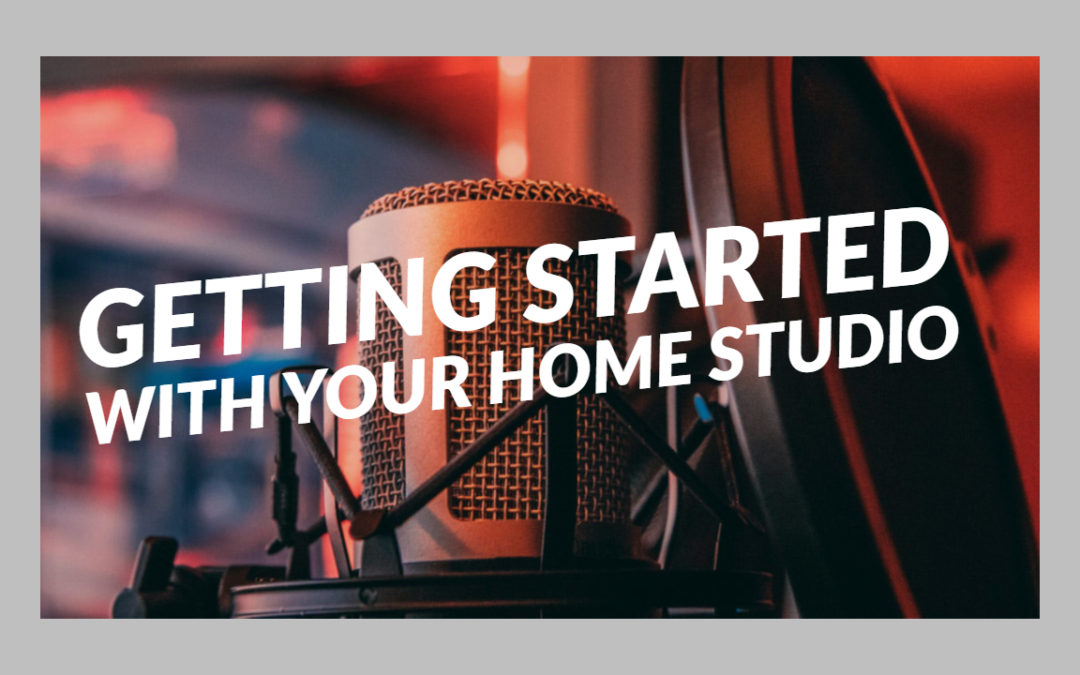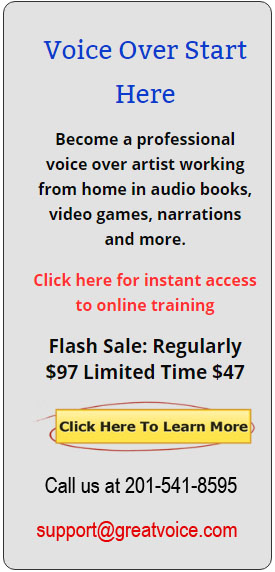Granny Smith apples, apple cider vinegar, even Diet Coke.
These are just a few of the fixes voice talent have sworn by to eliminate the sticky, noisy saliva that can ruin an otherwise perfect recording.
They’ve lugged their “mouth noise First Aid kit” from studio to studio, reluctantly said no to the pizza and bagels freely offered at recording studios, and suffered through a long list of dietary restrictions–all in the name of a click-free mouth.
But here’s some great news.
Now you can kiss ole’ Granny Smith goodbye and take a big swig of milk before a recording session if you like because there’s a little piece of software that will eliminate all that mouth noise for good.
This is my series on the four pillars of voice over success. So we took a look at the performance pillar last week. This week we’re talking about the pillar of gear. Now, this is a pillar we could talk about for hours and hours and hours. And in fact, you can spend thousands of dollars on your super-duper man cave or woman cave and having an awesome home studio. But I really don’t think that’s necessary for a new voice of a talent or actually for anyone.
Now, I’ll give you a personal example. So for years I was working with a $4,000 AKG 414 microphone. Sounded pretty good. And one day we decided to test, and we found a microphone for $300 from Blue, the Bottle Baby Blue, that actually sounds much, much better on my voice. Suspending a lot of money on your gear does not necessarily get you the best results. So I’m not saying you shouldn’t have a great showplace for your voice over home studio, but it’s just something to think about.
So the most important thing with microphones, there’s two types. There’s the USB mic that plugs right into your computer, and there are microphones that require an audio interface. Most people starting out will look for the USB mic. There’s a couple on the market that are really great quality, the Apogee and the Blue Yeti. And there are others as well. But I’m just trying to give you an overview in this blog. And those mics are not very expensive. You’ll be able to get one that’s more than good enough from $100 to $200 range. But just make sure it’s a good professional microphone.
The second is you’ll need some professional headphones. And those will set you back about 99 bucks, about $100 a pop screen for your microphone. And then recording software. Now, the deal with recording software is to choose one that you like, that you’re comfortable with because they all basically do the same thing. They manipulate the sound file. They’re not going to actually make you sound better, but some will be easier for you to use than others. For free, there’s Audacity, which I personally find difficult to use.
So here on our PCs we use Sound Forge. At home on my Mac, I use something called TwistedWave. There are both great programs. And again, it’s what you’re comfortable with. I do think that Pro Tools, which is the industry standard that they use in Hollywood for all the big movies and the commercials is overkill for a new voice talent. That’ll set you back hundreds, if not, thousands of dollars. And the learning curve to learn that is crazy off the charts. It’s just not necessary for most voice of our applications.
And the final thing I want to tell you about is a little piece of software that we are loving because it gets rid of mouth noise. Can you believe it? And hums and clicks and even chair and phone noises. It’s called the Izotope RX. And pretty inexpensive. We’ve seen it on sale for as low as $25. So you have to look online to find that. But this is something, it’s a little more advanced. But you would apply it to your sound after you record. You just run it through the Izotope and you can literally get rid of mouth noises. What’s not to love. So next week we’re going to talk about the third pillar of voice over success without which all that great gear you bought this week is going to just gather dust. And that is the pillar of marketing. So join me then.
To learn all about it and other home studio essentials click here for this week’s Inside Voice Over video training blog.
Click the link to watch the short video and when you’re done, be sure to leave a comment. I always love to hear from you.
Watch this week’s short training video Here Now
After you watch the video be sure to leave a comment. I always love to hear from you so I can support you as you grow your voice over career.
To your voice over success,
Susan Berkley
Founder, The Great Voice Company
P.S. When you’re ready, the first step is my VO Start Here program including a professional voice consultation with our talent advisor and my Perfect Performance on-line training.
To get started, click here now




Thanks for the tip Susan…Isoptope RX…can’t wait to try it:)
This video was great, it had a lot of information packed in a short time span.
You’re welcome guys! I always appreciate your comments- Susan